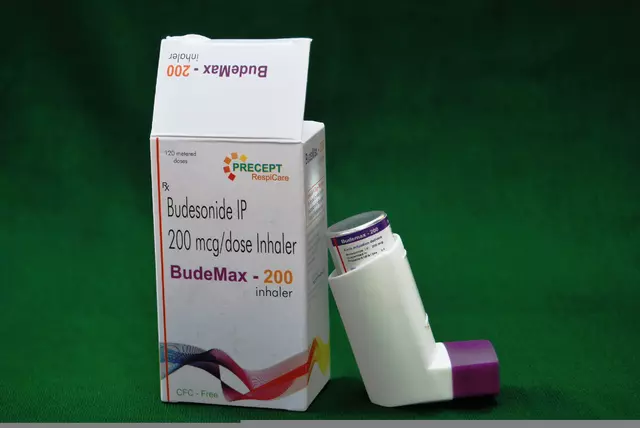Let's talk about something that hits close to home for many folks dealing with rheumatoid arthritis—prednisolone. It's a steroid, but not the kind you hear athletes getting in trouble for. This one's all about reducing inflammation, the main culprit behind those painful, swollen joints.
So why does prednisolone often get the spotlight? Well, it's pretty darn effective at calming down the immune system when it goes rogue. When you're battling rheumatoid arthritis, your body's defense squad sometimes gets a bit too enthusiastic, attacking its own tissues. Prednisolone steps in to cool things off, providing much-needed relief.
But hey, like any medication, prednisolone isn't without its quirks. There are benefits, sure, but you also have to keep an eye out for things it doesn't play well with—like long-term use. Understanding how to balance its use is key. Lucky for you, we've got tips and facts coming right up to help navigate the landscape of prednisolone and rheumatoid arthritis.
- Understanding Prednisolone
- Benefits in Rheumatoid Arthritis
- Managing Side Effects
- Integrating Prednisolone in Daily Life
Understanding Prednisolone
Alright, so what exactly is prednisolone? In simple terms, it's a type of corticosteroid, which is just a fancy way to say it's a drug that mimics hormones your body naturally makes in the adrenal glands. These hormones are crucial because they help keep inflammation in check and your immune response in balance. Pretty neat, right?
In the context of rheumatoid arthritis (RA), prednisolone is like your trusty sidekick that steps in when your immune system decides to launch an all-out attack on your joints. The drug helps by dialing down the inflammation, which in turn, eases pain and stiffness.
How Does It Work?
Think of prednisolone as a sort of 'mute' button for your immune system. When your body's defense squad gets too hyped and starts firing off inflammatory responses like crazy, prednisolone swoops in to calm things down. It reduces the production of substances in the body that trigger inflammation and immune response. This effect can significantly improve your quality of life if you're grappling with RA.
Common Forms
You’ll typically find prednisolone in several forms, the most common being tablets and liquid solutions. The idea is to tailor the dosage to fit the severity of the inflammation you're experiencing. This medication is usually taken orally, and the dosage may vary based on your specific needs and the stage of your RA.
Did You Know?
| Fact | Detail |
|---|---|
| Approval Year | Prednisolone was first approved by the FDA in 1955. |
| Prescription Frequency | It's among the top 100 prescribed medications in the U.S. |
With all this in mind, understanding prednisolone's role is crucial, especially considering how it can be a key player in managing RA symptoms. Always be sure to chat with your doctor about the best way to incorporate it into your treatment plan.
Benefits in Rheumatoid Arthritis
When it comes to fighting rheumatoid arthritis, prednisolone stands out for a bunch of good reasons. This medication is a trusty ally in reducing the painful inflammation and swelling that mark this condition. Now, let's break down how it helps day-to-day.
Reducing Inflammation and Pain
A biggie in the benefits department: prednisolone cuts down inflammation fast. That's crucial for folks dealing with those stubborn flare-ups where joints suddenly feel like they're on fire. By calming the immune response, prednisolone eases the ache and helps you move more freely.
Quick Relief
Unlike some treatments that take their sweet time, prednisolone tends to act quickly. It doesn't mess around—often within hours to days, folks notice a difference. This can be a game-changer, especially during severe flare-ups when you need to get back on your feet quickly.
Improvement in Daily Activities
There's also the everyday stuff to consider. When inflammation is down, simple activities—think buttoning a shirt, walking, cooking—become a lot more doable. This helps keep life running smoothly and keeps you more independent.
Working in Tandem with Other Drugs
Prednisolone works well with other rheumatoid arthritis treatments. It can be combined with drugs like methotrexate for even better outcomes. This combo approach can help maximize relief while minimizing individual drug dosages, which means fewer side effects in the long run.
While you're getting all these benefits, keeping track of any side effects and working closely with your healthcare provider is essential to ensure prednisolone fits nicely into your treatment plan.

Managing Side Effects
When it comes to prednisolone, side effects are like uninvited guests at a party—they might show up, and you’ve got to know how to handle them. This doesn't mean you shouldn't use the medication. Instead, it's about knowing what to watch for and how to respond.
Know the Usual Suspects
Some side effects are more common than others. These can include weight gain, mood swings, and sometimes trouble sleeping. Because prednisolone is a steroid, it can sometimes affect your appetite, making you feel hungrier than usual.
Tips for Taming the Effects
- Watch Your Diet: Try to keep a balanced diet in check, even when cravings hit. Focus on fruits, veggies, and whole grains.
- Stay Active: Regular exercise can help manage weight and improve mood swings. Plus, it’s great for keeping the joints moving.
- Sleep Smart: If sleep becomes an issue, make your bedroom a comfy sleep zone. Think about reducing screen time before bed to help wind down.
Of course, everyone's experience is different. It’s super important to keep the lines open with your healthcare provider to tweak things as needed.
Staying Ahead
Facing long-term treatment? Things like bone health become more important. Some folks might need to think about calcium and vitamin D supplements. Keeping routine check-ups on schedule will help monitor changes.
To sum it all up, while prednisolone is a key player in the fight against rheumatoid arthritis, being mindful and proactive about side effects can make all the difference in how you feel day to day.
Integrating Prednisolone in Daily Life
So, you're on prednisolone and dealing with rheumatoid arthritis—no small feat, right? The trick is fitting this medication into your daily routine without letting it call the shots. Let's break down how you can do that.
Stick to Your Schedule
First things first, timing is everything. Usually, taking prednisolone in the morning is the way to go. Why? It aligns with your body's natural rhythm of steroid production, minimizing potential side effects. So, pop that pill right after breakfast.
Managing Side Effects
Like any medication, prednisolone can have its downsides. A common one is increased appetite, sometimes leading to weight gain. Combat this by focusing on a balanced diet—think fruits, veggies, and lean proteins. Staying active helps too, even if it's just a daily walk.
Remembering the Dose
It's easy to forget a dose, especially on busy days. Set a daily alarm on your phone as a reminder. Some folks find pill organizers handy, especially if juggling multiple meds.
Dealing with Flares
Inevitably, there will be days when symptoms flare up. Having a rescue plan can be reassuring. Talk to your doc about adjustments you can make for those tougher days instead of just winging it.
Track Your Progress
Keeping a diary or using an app to track how you feel on prednisolone can be enlightening. Not only does it help you, but it gives your healthcare provider valuable insights during check-ups, ensuring your treatment stays on point.
| Potential Side Effects | Mitigation Tips |
|---|---|
| Increased appetite | Eat balanced meals |
| Weight gain | Regular exercise |
| Mood swings | Mindfulness practices |
Bottom line? Integrating prednisolone into daily life is about finding balance. It's not just about managing your condition—it's about living well while doing so. Always keep a dialog open with your healthcare provider, and you'll find your groove.





Vishnu Raghunath
Oh great, another steroid that the pharma giants push like a miracle cure.
Sure, it calms the immune system, but at what hidden cost? I guess we just swallow the side‑effects and thank the big pharma lobbyists.
Aparna Dheep
We stand at the crossroads of modern medicine and moral decay; prednisolone is but a fleeting balm for a deeper societal malaise. Its quick relief tempts us to ignore the long term tyranny of steroids. If we are not vigilant, we become complicit in our own deterioration. Let us rise above the cheap comforts and demand holistic healing.
Nicole Powell
Prednisolone is a convenient shortcut, but it masks the real issue of uncontrolled inflammation. The elite in rheumatology should prescribe it sparingly, not as a first‑line indulgence. Patients deserve a regimen that builds resilience, not dependence.
Ananthu Selvan
Really? Your lofty talk ignores the everyday pain people endure. Stop preaching and acknowledge that steroids sometimes are the only practical option.
Nicole Chabot
Finding a balance with prednisolone can truly enhance quality of life.
Sandra Maurais
The pharmacological profile of prednisolone warrants a meticulous examination beyond its superficial anti‑inflammatory reputation. Its glucocorticoid activity exerts profound effects on the hypothalamic‑pituitary‑adrenal axis, which clinicians must monitor vigilantly. Empirical evidence demonstrates rapid attenuation of synovial inflammation, thereby facilitating functional recovery in rheumatoid arthritis cohorts. However, the risk of iatrogenic osteoporosis emerges prominently with prolonged exposure, necessitating prophylactic measures such as calcium and vitamin D supplementation. Metabolic perturbations, including hyperglycemia, can exacerbate comorbid conditions and must be addressed through interdisciplinary care. The temporal alignment of dosing with endogenous cortisol peaks reduces adrenal suppression and improves tolerability. Recent guidelines advocate for the lowest effective dose, tapering strategies, and periodic reassessment of therapeutic necessity. Patient adherence improves when clinicians provide clear tapering schedules and reinforce education on potential adverse effects. Moreover, integrating physical therapy can synergistically augment joint mobility while diminishing reliance on pharmacotherapy. It is incumbent upon prescribers to balance the immediacy of symptom relief with the long‑term sequelae of systemic steroids. Biomarker monitoring, such as serum cortisol levels, offers objective insight into hypothalamic‑pituitary suppression. Clinicians should also remain alert to psychiatric manifestations, including mood swings and insomnia, which may compromise overall well‑being. In practice, shared decision‑making empowers patients to weigh benefits against risks, fostering sustained therapeutic alliances. Ultimately, prednisolone remains a valuable component of a multimodal regimen when employed judiciously and with comprehensive oversight. 😊 The conscientious application of these principles ensures optimal outcomes while safeguarding patient safety.
Michelle Adamick
🛠️ Leverage the pharmacodynamic window of prednisolone to orchestrate a catabolic‑anabolic equilibrium! By employing a precision‑taper protocol, you can mitigate glucocorticoid‑induced catabolism while preserving anti‑inflammatory potency. Harness integrative biomarkers and adaptive dosing algorithms to maximize therapeutic gain. 🚀 Stay proactive, stay empowered, and let evidence‑based optimization be your catalyst.